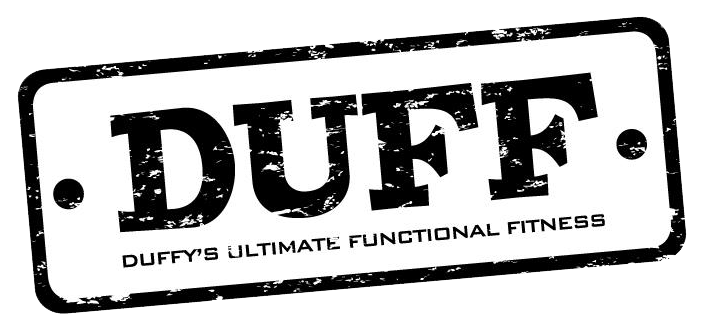“UNHEALTHY” FOOD YOU CAN EAT
It’s beach season here in Charleston and Mount Pleasant. We talked all about the bikini bod last week with our article on CORE. And as we noted, a rockin’ bod does not come from exercise alone. No matter how many miles you clock on the treadmill or how many pounds you lift at the gym, you’re not going to reach your fitness goals without watching what you eat!
While many fitness experts spend time talking about what NOT to eat, this week we’re going to spend some time debunking diet myths and talk about what you CAN eat!
Never mind their bad reputation, here are our TOP FIVE BAD FOODS THAT ARE ACTUALLY GOOD FOR YOU!
#1 Peanut Butter
After working hard at the gym, you certainly don’t want to go home and chow down on Reese’s Peanut Butter Cups! But believe it or not, if you eat the RIGHT kind, peanut butter can IMPROVE your diet. Take it from Shape: “Research finds that people who eat peanut butter every day have healthier diets overall. Peanut butter may be high in fat, but 80 percent of that fat comes from healthy monounsaturated and polyunsaturated oils. Peanut butter is a high-protein food with lots of vitamin E, niacin, folic acid, magnesium, and antioxidants. Shop for natural peanut butter made from nothing but ground peanuts, or commercial peanut butter that doesn’t have trans fats, high fructose corn syrup, or much sodium.”
So skip the Jiffy and go for natural—Whole Foods and Earth Fare have peanut grinders so you can make your own! (We also love Trader Joe’s Crunchy Unsalted PB which has NOTHING but peanuts!).
#2 Bacon
Say WHAT?!?!?! Now please keep in mind, we’re not telling you to eat the Baconator to reward your serious lifting session. Consuming bacon is a TREAD LIGHTLY situation. In fact, Health Magazine reminds us to use bacon almost like a spice: “The key here? Small amounts. Bacon can be loaded with salt and saturated fat, which is why you want to use it more like a garnish than a main event. Sprinkle crumbled bacon atop a side dish of Brussels sprouts or a veggie-filled salad.” The trick is that if you sprinkle a little indulgence into your meal, you will feel satisfied and be less likely to cheat BIG TIME.
#3 Cheese
Much like bacon, this is not a license to pig out on cheddar after running a few miles! Men’s Health quotes Ginger Hultin M.S., R.D.N., C.S.O., spokesperson for the Academy of Nutrition and Dietetics, who reminds us that when eaten in proper portions, cheese is loaded with good stuff: “Cheese is a rich source of protein, and it’s especially high in bone-boosting calcium and phosphorus…One ounce (oz) of cheese contains 7 grams (g) of protein. And because, protein is known for its ability to keep you full for a long period of time, snacking on a little bit of cheese goes a long way. Some research even suggests that cheese may provide gut health boosting probiotics, which are connected to their own slew of health benefits.”
#4 Pasta
We are repeating ourselves here, we know. “Carbing Up” before or after a major workout at the gym is a BAD IDEA. Just like with cheese and bacon, to eat pasta is to be about moderation. Take it from LiveStrong: “The key to eating pasta is to keep your portions to no more than 1 cup cooked. Believe it or not, the recommended serving size of pasta is 1/2 cup of cooked pasta — the amount you can hold in one cupped hand! If you were served that amount at a restaurant, you’d most likely feel cheated! Most people eat 2 cups of pasta for a meal. For a more balanced (and filling) meal, prepare pasta with veggies, seafood or lean protein such as chicken or tempeh, and top it with a tomato-based sauce rather than a cream-based sauce.”
#5 Chocolate
The health benefits of chocolate have been popular news fodder for years. The Cleveland Clinic explains that unprocessed chocolate has flavonoids (“When we eat foods rich in flavonoids, it appears that we also benefit from this ‘antioxidant’ power”); antioxidants(“believed to help the body’s cells resist damage caused by free radicals that are formed by normal bodily processes, such as breathing, and from environmental contaminants, like cigarette smoke”); and flavanols (“[which] has influences on vascular health, such as lowering blood pressure, improving blood flow to the brain and heart, and making blood platelets less sticky and able to clot”).
But at the risk of sounding like a broken record, eating chocolate it’s all about QUALITY and QUANTITY! NBC News recommends: “To enjoy chocolate the healthy way, try nibbling on a few squares of 70% or higher dark chocolate paired with strawberries or melted onto bananas, mix 2 tablespoons unsweetened pure cocoa powder into your coffee or a cup of warm milk or sprinkle cacao nibs on oatmeal or a smoothie bowl…”

